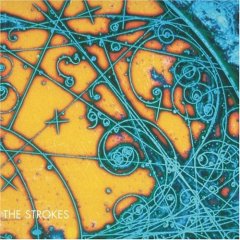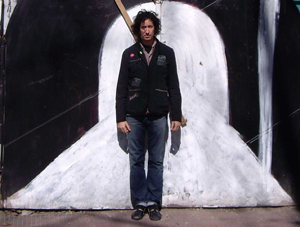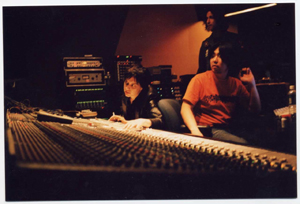The Strokes Still Rule the Decade: "Is This It" Explained by Gordon Raphael
EAST VILLAGE, MANHATTAN: Why did The Strokes album Is This It change the world? Raw aggravations and melodic mastery were set free by five wizened Manhattan youths whose instincts were apparently dead on about…everything that had anything to do with music.
 Rough rough rough when so much else in 2001 was sounding slick slick slick, the 11 tracks of Is This It seemed to have a magical effect on almost everyone who heard them. Arriving at a time when reality was, apparently, desperately needed by all, the landmark album was recently named “Album of the Decade” by NME and landed the coveted #2 on Rolling Stone’s own Decade list.
Rough rough rough when so much else in 2001 was sounding slick slick slick, the 11 tracks of Is This It seemed to have a magical effect on almost everyone who heard them. Arriving at a time when reality was, apparently, desperately needed by all, the landmark album was recently named “Album of the Decade” by NME and landed the coveted #2 on Rolling Stone’s own Decade list.
The unmistakably downtown songs were played by five very energetic young guys, headed by the vision of Julian Casablancas, but it was producer Gordon Raphael who was key in somehow setting their music free. The Strokes made their way into Raphael’s Lower East Side basement studio, Transporterraum, on their way to signing with RCA in search of anything except the conventional approach to recording records at the time. In a cosmically fortunate turn of fate, they had their man.
“I’ve mulled it my head a thousand times,” the always-mellow Raphael reflected from his current home base of Berlin, on Is This It’s nonstop impact. “All I can say is that when people heard the authentic sound of people enjoying playing music together, rather than this manufactured, ‘This-is-what-music-is’ product – with all these people programming beats and technology and assembling it – they appreciated it.”
Raphael was famously directed by Casablancas to make the album, which would include the hits “Someday”, “Last Nite”, and “Hard to Explain”, sound like it was by “a band from the past that took a time trip into the future to make their record”. The Seattle-bred producer, who had cut his teeth on the industrial scene, knew exactly what to do – and what not to do — with his limited recording resources.

Gordon Raphael
“They wanted to sound like something different from anything that was going on then,” he explains. “I thought, ‘Well, we’ve only been using Pro Tools instead of tape for four years, and all the producers are going nuts over the fact that they can do 64 tracks of audio.’ Everyone was pasting together five samples to make a snare drum sound. So what’s the opposite of that? No samples. Everyone is playing to a click track, and isolating drums from the guitar. So let’s have everyone in the room at the same time, live. There was something about The Stooges that they liked, something not really in control, but exciting. Out of balance. Chaotic, but fun.”
The recording techniques – or lack of same – that Raphael applied to what came next is well-documented. A punk rock, three-mic approach to Fabrizio Moretti’s drumkit, with bleed from the guitars of Nick Valensi and Albert Hammond, Jr., plus the bass of Nikolai Fraiture, very much allowed to live. No EQ after the preamp for the guitar amp mics. Casablancas vocals recorded through a miniscule Peavey practice amp. When it came to fidelity, the open-minded Raphael willingly took the lo road, all the better for The Strokes’ starkly honest rock songs to just come on through the speakers.

Gordon steadfastly watches over Julian
For Raphael, one quintessential Is This It song is the extra-brash track “Take It or Leave It” that ended the U.S. album. “Just recording it and the guitar solo – it was a giantly expressive piece,” says Raphael. “It just jumped out of the speakers with no politeness whatsoever, and cleared your ears in the most delightful way. But I think a lot about ‘New York City Cops’. It rounded off the album and was forced to be taken after the American pressing after 9/11. Taking that piece of music off of it was like shooting a foot off, and then going on the hike. It wasn’t quite as powerful without that little gem on the record.”
Released in the US on October 9, 2001, the response to Is This It was immediate and explosive, a musical salve for the incredibly deep emotional wounds that so many in NYC and beyond were feeling at the moment. The people (that’s us) embraced it. Critics – for what they’re worth – gave the record the most massive props they could, with album-of-the-year (or equivalent) honors coming from the likes of Billboard, CMJ, Time and more.
Now with album-of-the-decade accolades coming in, and 3.5 million copies sold since release, it’s clear that Is This It was not just a knee-jerk reaction to the times: It’s a true classic. Small wonder that it caused an almost overnight change in the NYC music culture. “I lived in NYC in the ‘90’s and into the 2000’s,” says Raphael. “When I was there, it was all about guys with chains and backwards baseball hats. Every club was spinning acid music, focusing on a DJ up on a platform being worshipped like the Messiah. That was the scene.
The July/August 2001 cover of "Is This It"
“The year after Is This It, I came back to the East Village and the entire scene was guys in leather jackets carrying guitars on their backs. That’s my kind of music. I’ve gotten so much from rock music my whole life. It’s been my best friend, and it seems like something I was involved with brought back the idea of guys playing guitars together. It was like a little payback.” – David Weiss







Chris
January 7, 2010 at 2:31 pm (15 years ago)I hope they hurry up with the new album and get touring its been too long. Check out the progression of Indie music over the last decade and how The Strokes played their part here http://bit.ly/7e2SfY some really great bands are featured.
Chris
January 7, 2010 at 7:31 am (15 years ago)I hope they hurry up with the new album and get touring its been too long. Check out the progression of Indie music over the last decade and how The Strokes played their part here http://bit.ly/7e2SfY some really great bands are featured.